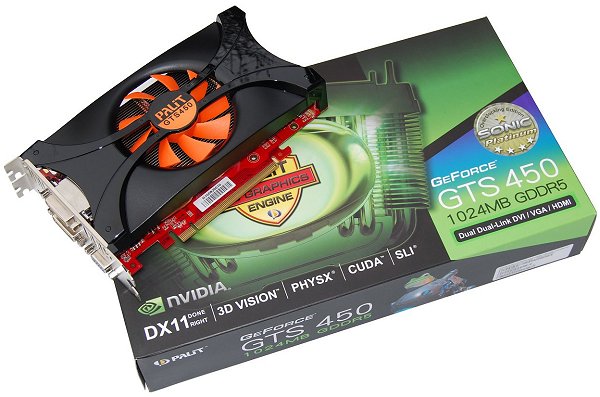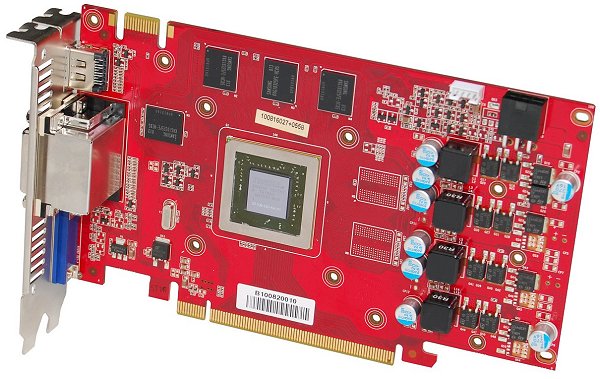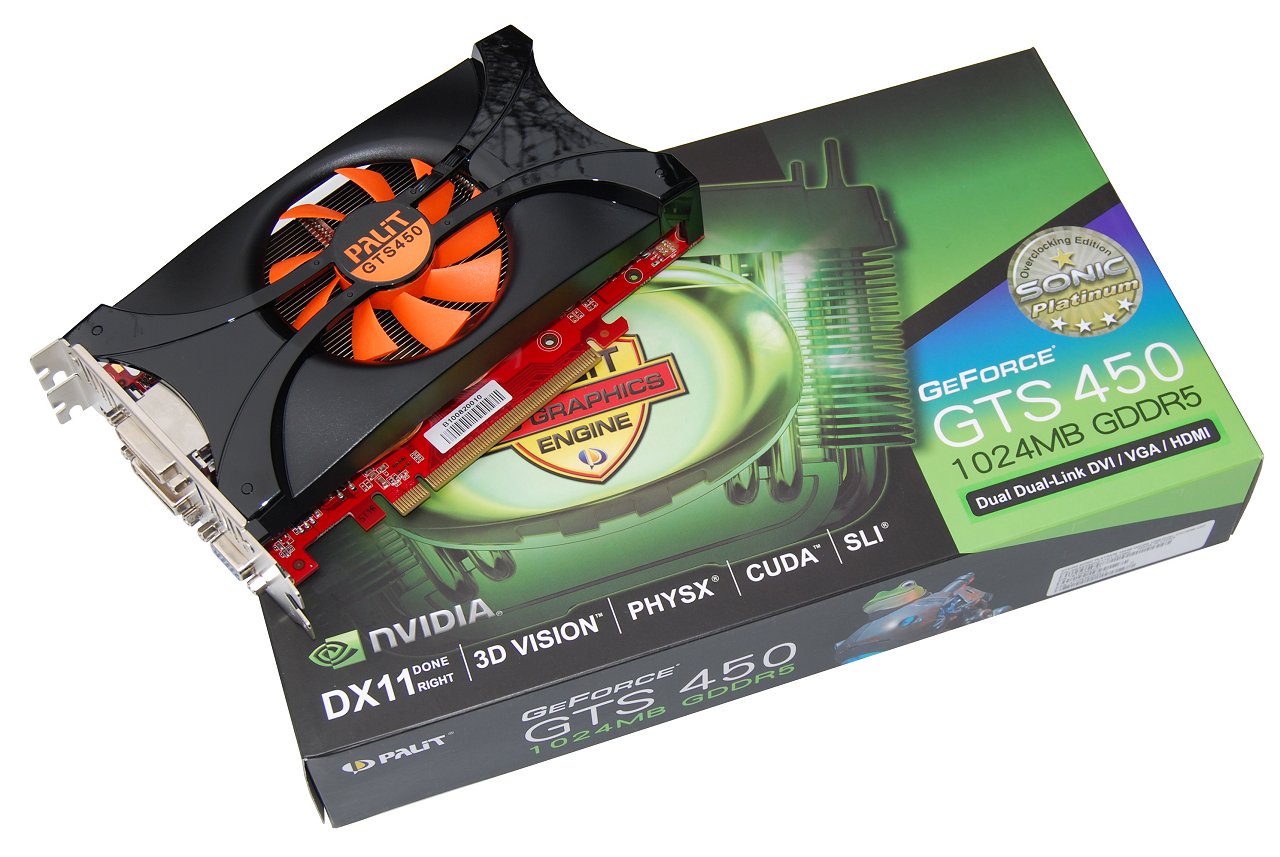Palit GeForce GTS 450 Sonic Platinum
Palit provided us with their most impressive GeForce GTS 450 offering, the Sonic Platinum edition. This product has been reworked from the ground up, and both the cooler and PCB are not part of the reference specification. In short, this is not your standard GeForce GTS 450 1GB.
The GTS 450 Sonic Platinum measures 19cm long (7.5in) making it a centimeter shorter than the Radeon HD 5770 and 2cm shorter than the Nvidia reference design. The card is so compact that it's just a bit longer than the PCI Express x16 slot. This is a nice feat though we have also caught wind of plans for a low-profile version of this graphics card from Palit which should also be very interesting.


Besides the smaller physical dimensions we see some changes on the power circuitry on the GTS 450 Sonic Platinum compared to the reference board. Palit has changed the layout of the card likely to save money and space. The smaller PCB design also means that the reference cooler no longer fits.

The GTS 450 Sonic Platinum cooler is based on a more simplified traditional design, using dual copper heatpipes that connect to a copper base, but the heatsink itself is more compact. Palit has stuck with a 75mm fan while the heatsink is also covered by a black fan shroud. The Palit design has the power circuitry passively cooled by a rather large aluminum heatsink.



Palit is shipping the GTS 450 Sonic Platinum 1GB overclocked from factory. The core frequency is boosted by an impressive 147MHz to 930MHz, while the memory frequency has been increased from 900MHz to 1000MHz. The shader clock speed is pushed from 1566MHz to 1860MHz, a rather large jump considering that the standard frequency is much higher than that of the GeForce GTX 480.

The last addition we can mention on the GTS 450 Sonic Platinum is the HDMI port and the legacy VGA port that it carries besides the standard dual DVI ports.
Overall the GTS 450 Sonic Platinum is an attractive take on the new Nvidia GeForce GTS 450 and we are keen to see how it will perform against a standard non-overclocked version as well as competing AMD products.
